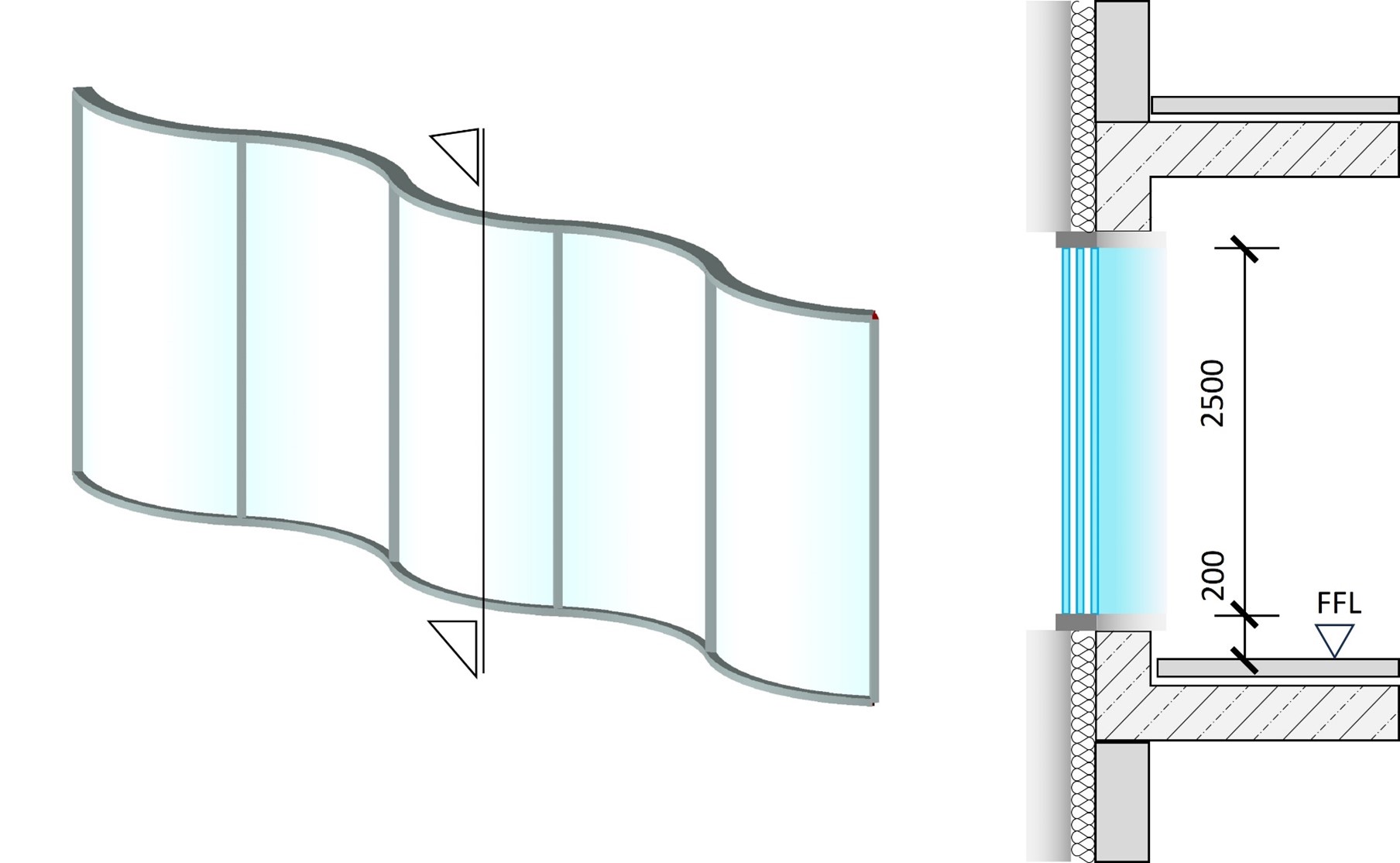Abstract
The topic of climate change has arrived in the everyday thinking. There is an ongoing discussion about how the man-made environmental impact can be reduced. Several strategies can be observed. One is the increasing of recycling and reuse potential on the one side, and another is reduction of built mass on the other side. In this case the built glass mass can be reduced with the usage of thin glass in the design process of insulated glass units - IGUs. This paper is a discussion about concepts to minimize the glass thickness as much as possible for a usage of thin glass for insulated glass. For a given situation room-high IGUs with defined sizes and different boundary conditions such as curvatures for cold bent glass applications will be analysed. Based on building physics demands triple IGUs will be considered for a better thermal performance. In a parametric study flat and cylindrically shaped IGUs will be compared. The influence of the variation of different parameter on the internal loads the so-called climatic loads on the one side and the so-called coupling effect for external loads such as wind and barrier load on the other hand will be elaborated. With transient simulations of the pendulum impact the fail-limit state was examined in addition. Based on the prEN19100 a structural design was carried out. As the result of the study the minimum of the possible glass thicknesses depending on the geometry and the load is given.
Published
Issue
Section
Thin Glass
License
Copyright (c) 2024 Jürgen Neugebauer, Katharina Schachner

This work is licensed under a Creative Commons Attribution 4.0 International License.




